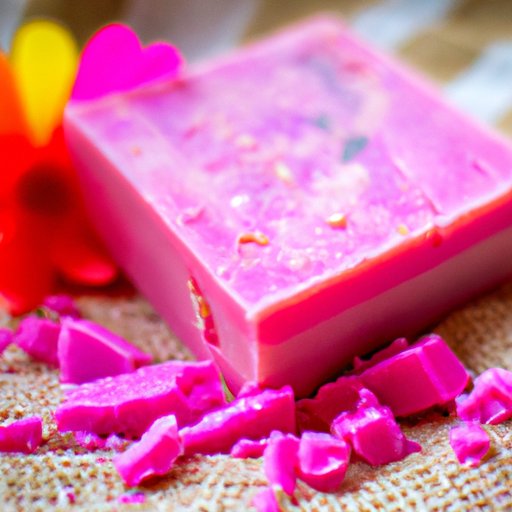
I. Introduction
If you’re interested in making your own soap from scratch, you’ll first need to learn how to make lye. Lye, also known as sodium hydroxide, is an essential ingredient in soap-making. However, making lye from scratch can be a daunting and potentially dangerous process if you’re not familiar with the steps. In this article, we’ll guide you through the process of making lye from wood ash, discuss the history and science behind lye-making, compare different methods of making lye, and provide a recipe for making soap from scratch.
II. A Step-by-Step Guide to Making Lye from Scratch
Making lye from scratch involves several steps that should be followed carefully to ensure the quality of the final product.
1. First, you’ll need to gather wood ash from a hardwood fire. Avoid using softwood ash, as it contains less potassium and is therefore less effective for making lye. Place the ash in a large container and mix with water to create a slurry.
2. Filter the slurry through a cloth or coffee filter to remove any impurities. Allow the mixture to settle, and skim off any floating material.
3. Test the resulting “lye water” with pH strips to ensure its quality. The pH should be between 10 and 12 to be effective for soap-making.
4. Boil the lye water in a stainless steel or enamel-coated pot until it has reduced by about half. This will concentrate the lye and remove excess water.
5. Always handle lye with caution. Wear gloves, protective eyewear, and a long-sleeved shirt to avoid skin contact.
III. A Historical Perspective on the Use of Lye
Lye has been used throughout history for a variety of purposes, including cleaning, food preparation, and soap-making. In ancient times, lye was made by leaching water through ashes and was used for cleaning kitchen utensils, clothes, and floors. It was also a key ingredient in soap-making, which was an important skill for homemakers. Today, lye is still used in cleaning products, as well as in the production of biodiesel fuel and food processing.
IV. A Comparison of Different Methods of Making Lye
While wood ash is the traditional method of making lye, commercial lye is also available for purchase. However, commercial lye can be expensive and may contain additives that you may wish to avoid if you’re making natural soap. Using wood ash, on the other hand, is a cheaper and more natural option, but requires more time and effort to produce.
V. The Science Behind Lye-Making
The process of making lye involves a chemical reaction between potassium hydroxide and carbon dioxide. This reaction produces potassium carbonate, which, when combined with water, yields potassium hydroxide, or lye. Lye is highly alkaline and works by breaking down fats and oils, making it an essential ingredient in soap-making.
VI. A Recipe for Making Soap Using Lye
Once you’ve made your own lye, you’re ready to start making soap! Here’s a basic recipe for making handmade soap:
Ingredients:
- 2 oz. lye
- 6 oz. water
- 16 oz. vegetable oil
- Optional: essential oils, herbs, or other additives for scent and texture
Instructions:
- Mix water and lye in a glass bowl or pitcher. Never use aluminum or other reactive metals.
- In a separate container, heat the vegetable oil to about 110°F.
- Combine the lye-water and the vegetable oil, stirring constantly. The mixture will thicken and turn opaque.
- Add any essential oils or other scents or textures, if desired.
- Pour the mixture into a mold and let it set for 24 hours.
- After 24 hours, remove soap from mold and cut into bars.
- Let the soap cure for 3-4 weeks, turning it occasionally, to allow excess water to evaporate and the soap to harden.
Remember, soap-making is a creative process and can be customized to your preferences. Experiment with different oils, scents, and additives to find your perfect soap recipe!
VII. Conclusion
Making your own lye and soap from scratch can be a rewarding and satisfying experience. By following these steps, you can produce high-quality soap using natural ingredients and avoid the additives found in commercial soaps. Remember to always handle lye with care, and wear protective equipment to avoid skin contact.




